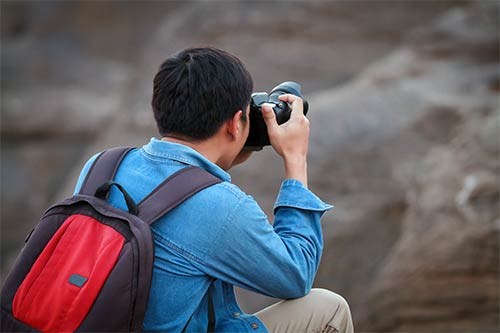
Many wildlife species can be found throughout the park. Explore our wildlife pages to find out what you can see. When you spot wildlife, getting a great photo or video even from a distance isn’t too hard if you follow our advice. Although mobile device cameras are convenient, you may want to bring along a camera that has a zoom lens for better zoomed-in photos of wildlife. 

You’ve found your park, now find the safe distance from wildlife to capture great memories. More Wildlife Viewing and Safety Tips

Viewing North Rim Bison Safely.
|
Last updated: February 27, 2024
